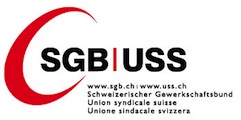Publications des institutions partenaires
Thomas Nitschka: The Good? The Bad? The Ugly? Which news drive (co)variation in Swiss and US bond and stock excess returns?
Based on a vector autoregressive model, this paper shows that time variation in monthly excess returns on Swiss government bonds and stocks is predominantly driven by news of inflation and dividends, respectively. This finding is in marked contrast to US evidence which points to a more prominent role of excess return news in this respect. The bond market findings for both...
Institution partenaire
English / 27/04/2016
Linda S. Goldberg and Christian Grisse: Time variation in asset price responses to macro announcements
Although the effects of economic news announcements on asset prices are well established, these relationships are unlikely to be stable. This paper documents the time variation in the responses of yield curves and exchange rates using high frequency data from January 2000 through August 2011. Significant time variation in news effects is present for those announcements that have the...
Institution partenaire
English / 27/04/2016
Robert Oleschak and Thomas Nellen: Does SIC need a heart pacemaker?
Real-time gross settlement (RTGS) systems effect final settlement of payments continuously and on an individual basis. This generates a trade-off between liquidity needs and settlement delay. Against the background of reconstruction discussions, the paper analyses whether more advanced algorithms reduce liquidity needs and settlement delay if applied to the Swiss Interbank Clearing (...
Institution partenaire
English / 27/04/2016
Gregor Bäurle and Elizabeth Steiner: How do individual sectors respond to macroeconomic shocks? A structural dynamic factor approach applied to Swiss data
Surprisingly little empirical work is available on how individual production sectors respond to macroeconomic shocks. The model developed in this paper quantifies the impact of monetary policy, exchange rates and external demand on the various production sectors of the Swiss economy. Our results show that such shocks are incompletely transmitted and that their effect is...
Institution partenaire
English / 27/04/2016
Nikolay Markov and Thomas Nitschka: Estimating Taylor Rules for Switzerland: Evidence from 2000 to 2012
This paper estimates Taylor rules using real-time inflation forecasts of the Swiss National Bank's (SNB) ARIMA model and real-time model-based internal estimates of the output gap since the onset of the monetary policy concept adopted in 2000. To study how market participants understand the SNB's behavior, we compare these Taylor rules to marketexpected rules using Consensus...
Institution partenaire
English / 27/04/2016
Victoria Galsband and Thomas Nitschka: Currency excess returns and global downside market risk
We take the perspective of a US investor to assess cross-sectional differences in 19 bilateral, conditional currency excess returns in an empirical model that distinguishes between US-specific and global risks, conditional on US bull (upside) or bear (downside) markets. At first glance, our results suggest that global downside risk is compensated in average bilateral currency excess...
Institution partenaire
English / 27/04/2016
Elisabeth Beusch, Barbara Döbeli, Andreas M. Fischer and Pinar Yesin: Merchanting and Current Account Balances
Merchanting is goods trade that does not cross the border of the firm's country of residence. Merchanting grew strongly in the last decade in several small open economies, particularly in Finland, Ireland, Sweden, and Switzerland, and has become an important driver of these countries' current account. Because merchanting firms reinvest their earnings abroad to expand their...
Institution partenaire
English / 27/04/2016
Matthias Gubler and Matthias S. Hertweck: Commodity Price Shocks and the Business Cycle: Structural Evidence for the U.S.
This paper evaluates the relative importance of commodity price shocks in the U.S. business cycle. Therefore, we extend the standard set of business cycle shocks to include unexpected changes in commodity prices. The resulting SVAR shows that commodity price shocks are a very important driving force of macroeconomic fluctuations - second only to investment-specific technology shocks...
Institution partenaire
English / 27/04/2016
Christian Grisse and Thomas Nitschka: On financial risk and the safe haven characteristics of Swiss franc exchange rates
We analyse bilateral Swiss franc exchange rate returns in an asset pricing framework to evaluate the Swiss franc's safe haven characteristics. A "safe haven" currency is a currency that offers hedging value against global risk, both on average and in particular in crisis episodes. To explore these issues we estimate the relationship between exchange rate returns and risk factors in...
Institution partenaire
English / 27/04/2016
Simone Meier: Financial Globalization and Monetary Transmission
This paper analyzes the way in which international financial integration affects the transmission of monetary policy in a New Keynesian open economy framework. It extends Woodford's (2010) analysis to a model with a richer financial markets structure, allowing for international trading in multiple assets and subject to financial intermediation costs. Two different forms of financial...
Institution partenaire
English / 27/04/2016
Nicole Aregger, Martin Brown and Enzo Rossi: Transaction Taxes, Capital Gains Taxes and House Prices
Motivated by the search for instruments to contain future housing bubbles, we examine the impact of transaction taxes and capital gains taxes on residential house price growth. We exploit the variation in taxation across Swiss cantons, as well as within-canton changes in taxation over time. We relate these taxes to house price growth observed for 92 regions of the country during the...
Institution partenaire
English / 27/04/2016
Marco Huwiler and Daniel Kaufmann: Combining disaggregate forecasts for inflation: The SNB's ARIMA model
This study documents the SNB's ARIMA model based on disaggregated CPI data used to produce inflation forecasts over the short-term horizon, and evaluates its forecasting performance. Our findings suggest that the disaggregate ARIMA model for the Swiss CPI performed better than relevant benchmarks. In particular, estimating ARIMA models for individual CPI expenditure items and...
Institution partenaire
English / 27/04/2016
Andreas Kettemann and Signe Krogstrup: Portfolio balance effects of the SNB's bond purchase program
This paper carries out an empirical investigation of the impact on bond spreads of the announcement, purchases and exit from the SNB's bond purchase program in 2009-2010. We find evidence in favor of a narrowing yield spread of covered bonds as a result of the program. The effect materialized in the days following the announcement of the SNB's intention to buy bonds issued by private...
Institution partenaire
English / 27/04/2016
Katja Drechsel and Rolf Scheufele: Bottom-up or Direct? Forecasting German GDP in a Data-rich Environment
This paper presents a method to conduct early estimates of GDP growth in Germany. We employ MIDAS regressions to circumvent the mixed frequency problem and use pooling techniques to summarize efficiently the information content of the various indicators. More specifically, we investigate whether it is better to disaggregate GDP (either via total value added of each sector or by the...
Institution partenaire
English / 27/04/2016
Sébastien Philippe Kraenzlin and Thomas Nellen: Access policy and money market segmentation
We analyse deviations between interest rates paid in the Swiss franc unsecured money market and the respective Libor rate. First, banks that have access to the secured interbank market and the SNB's monetary policy operations pay less than banks without access. Second, domestically unchartered, foreign banks pay more than domestic banks. We find that these segmentations are limited...
Institution partenaire
English / 27/04/2016
Raphael Anton Auer, Thomas Chaney and Philip Ulrich Sauré: Quality Pricing-to-Market
We document that in the European car industry, exchange rate pass-through is larger for low than for high quality cars. To rationalize this pattern, we develop a model of quality pricing and international trade based on the preferences of Musa and Rosen (1978). Firms sell goods of heterogeneous quality to consumers that differ in their willingness to pay for quality. Each firm...
Institution partenaire
English / 27/04/2016
Thomas Nitschka: Global and country-specific business cycle risk in time-varying excess returns on asset markets
Deviations of national industrial production indexes from trend explain time variation in excess returns on the G7 countries' stock markets. This paper highlights that this finding is driven by a global, common component in the national production gaps. The global component is not a mirror image of the U.S. business cycle. Quite to the contrary, a "rest-ofthe-world" production gap...
Institution partenaire
English / 27/04/2016
Bo E. Honoré, Daniel Kaufmann and Sarah Marit Lein: Asymmetries in Price-Setting Behavior: New Microeconometric Evidence from Switzerland
In this paper we follow the recent empirical literature that has specified reduced-form models for price setting that are closely tied to (S, s)-pricing rules. Our contribution to the literature is twofold. First, we propose an estimator that relaxes distributional assumptions on the unobserved heterogeneity. Second, we use the estimator to examine asymmetries in price-setting...
Institution partenaire
English / 27/04/2016
Romain Baeriswyl and Camille Cornand: Reducing overreaction to central banks' disclosures:theory and experiment
Financial markets are known for overreacting to public information. Central banks can reduce this overreaction either by disclosing information to a fraction of market participants only (partial publicity) or by disclosing information to all participants but with ambiguity (partial transparency). We show that, in theory, both communication strategies are strictly equivalent in the...
Institution partenaire
English / 27/04/2016
Christian Hott and Terhi Jokipii: Housing Bubbles and Interest Rates
In this paper we assess whether persistently too low interest rates can cause housing bubbles. For a sample of 14 OECD countries, we calculate the deviations of house prices from their (theoretically implied) fundamental value and define them as bubbles. We then estimate the impact that a deviation of short term interest rates from the Taylor-implied interest rates have on house...
Institution partenaire
English / 27/04/2016
Pages
Le portail de l'information économique suisse
© 2016 Infonet Economy












